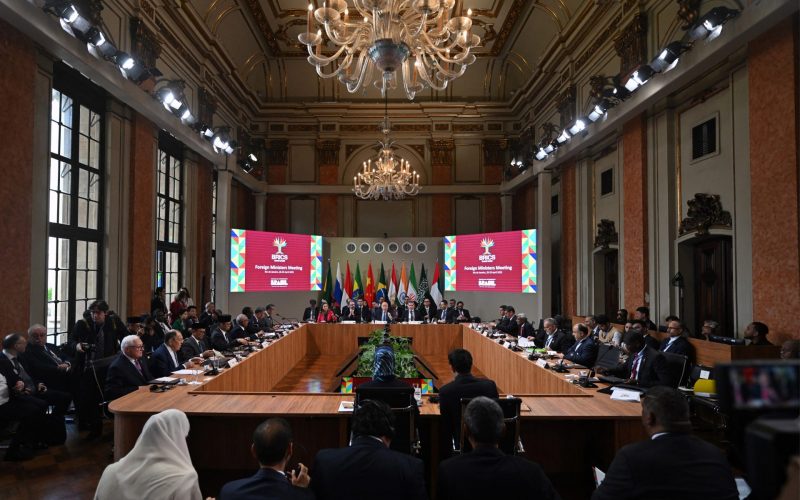From 24 September to 5 October, South Africa is hosting a conference on the Convention on International Trade in Endangered Species of Wildlife Fauna and Flora (CITES).
As an international treaty between member states that regulates the international wildlife trade, CITES sets appropriate standards of behaviour for countries to follow. In an effort to arrest rapid elephant population declines, for example, CITES banned the international trade of elephant ivory in 1989.
Such international norms, however, are at risk of being incompatible with local cultures, economies and values within range states. As South Africa hosts this important international meeting on its soil, the question is: will high-level decision-making at CITES translate into effective domestic policies that ensure the survival of the African elephant?
As limited exceptions to the international ban, CITES authorised two ‘once-off’ sales of ivory stockpiles (in 1999 and again in 2008) from southern Africa to China and Japan. Critics allege that this inadvertently spurred ivory demand and consequently stimulated further illegal trade. Another argument is that the increase in poaching and illegal trade was determined by other factors, such as a growing Chinese middle class who could suddenly afford ivory products.
Either way, understanding the aspirations held by these consumers is crucial for designing appropriate responses to reduce demand.
Ahead of the conference, impassioned debates between wildlife experts have sought to explain diverging country positions on the ivory trade and the long-term economic costs of lifting or maintaining the ban. Missing from these heated exchanges is a recognition of the role values play in shaping how different societies respond to global initiatives.
Values make groups distinctive. For instance, Thai culture and Hinduism have valued elephants for their ‘mystical’ symbolism and not the monetary value of their ivory. By contrast, communities in southern Africa value elephants predominantly in livelihood terms. Ivory can ostensibly generate revenue, and elephants are a source of nutritional bush meat.
To understand the implications of the disjuncture between international norms and local values, consider Japan: the international anti-whaling norm was rejected as it was incompatible with local values. Scholars have expressed concern over the distance between global bans and domestic institutions, which also need to reflect societal values and interests.
It is partly due to the lack of such consideration that Swan and Conrad’s study The Conflict between Chinese Cultural and Environmental Values in Wildlife Consumption finds that wildlife species have continued to decline in Asia, despite international protection.
In the African case, the conflict between local values and global norms is reflected in increasing levels of human-elephant conflict. Rural communities living alongside elephant populations are competing with elephants for scarce water and land resources, while elephants are also expert crop-raiders. So if elephants are perceived as a threat to livelihoods, there is less impetus to preserve them and it becomes more likely they will be poached.
Much has been said about including communities in conservation projects. Beyond this, locals also need to feel that their perceptions, concerns and values matter. The question of which values matter is complicated by the variance of values within a society, such as the ongoing debate in South Africa on how best to counter the increased poaching of rhinos, creating a schism between those in favour of legalising the international trade of rhino horn and those opposed. A paradox results, whereby the success of the ivory trade ban, like rhino horn, depends on people who do not necessarily share the ideals associated with that norm, yet are the very ones that hold the responsibility to realise it.
But the impact of values is not merely a local story of communities as enablers or obstacles to the implementation of norms promoted by states; it is also one about the growing influence of transnational practices like cross-state trade and its impact on shaping local values. Globalisation accentuates the contradictions of societal values, as societies evolve and adapt in certain ways and remain static in others.
History tells us that merchants have long treasured ivory. It was prized by Europeans in the 19th century as well as along the ancient Silk Road between Asia and Europe in 200BC. The difference is the pace of trade within the current global village. Today online marketplaces exist, such as Amazon and Alibaba. This is coupled with increased port and regional-connectivity infrastructure (as is taking place in East Africa at the moment) and free trade agreements, such as the one signed by China and the Association of Southeast Asian Nations in 2000 – all of which can make the nation-state concept seem almost obsolete.
So in the economic sense, ‘regional’ (instead of national) states exist, as borders have been reconfigured to fit relative market demands. And if there is an easier flow of goods and people, then there may be a similar diffusion of values.
Indeed the global adoption of monetising values, which emphasise goods and services, also exist in parallel and competition with societal values.
Elephant preservation lies at the fault line between ecocentric and human-centred perceptions of wildlife. International regimes like CITES, which seek to regulate market forces, need to come to terms with both domestic and global intricacies that both connect and fragment societies.
Understanding local values associated with elephants, and towards ivory, is a crucial step in crafting international norms that hope to gain local traction. Imposing bans without doing so will increase the threat to remaining elephant populations.








